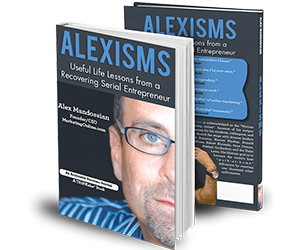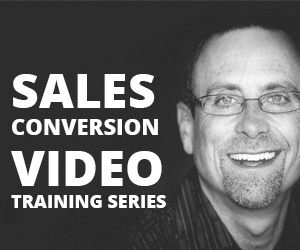What Entrepreneurs Find Most Challenging About Seeding

ATTENTION: COACHES, TRAINERS AND SPEAKERS…Here’s Your Seeding (not selling) Cheatsheet.
Everything you need to know about Seeding in one place. And I’ve got templates!
So there are two fundamental reasons why it’s better to seed than to sell:
- Pre-Suasion
- Pre-Qualification
Pre-suasion is, in the words of Robert Cialdini, the privileged moment for change. Seeding is pre-suasion. It allows your prospect to ‘see’ into the future and test out how the product or service is changing her life.
Pre-suasion subtly instills the person with a positive impression of you and your product. And the reason pre-suasion is important is because it does the heavy lifting for you. You don’t have to do a sales pitch ever again if you pre-suade.
Pre-qualification allows you to make sure the product or service is right for your prospect. And seeding seamlessly pre-qualifies or disqualifies your candidates or prospects.
Seeding automatically pre or dis-qualifies because you’re asking important questions and getting your prospect’s objections out in the open. Essentially you’re giving the qualification process center stage rather than an afterthought.
When you enter into a conversation with your prospect the question on your mind isn’t, “how can I get this person to buy?” The question should be, “is this person right for my product or service? Let’s find out.”
It all comes down to focusing on the prospect’s needs rather than your desire to ‘sell’ something.
Where to Seed
As a coach and trainer I speak to large audiences, work one-to-one, and for many years I even wrote my own copy. All these environments are perfect for seeding.
But you can use seeding anywhere, in any situation. Learning to create a buying environment as opposed to ‘selling’ all the time is the key.
When you write your Instagram or Twitter posts; when you speak one-to-one with someone; when you’re hosting a webinar or speaking to an audience of people it’s simply a matter of changing your mindset.
Let’s look at each environment specifically.
P.S. I’ll be providing templates for every buying environment.
Related Post: The D.E.L.T.A. Process: How to Sell Your Product in 5 Simple Steps
Related Post: Aren’t You Glad You Read This Blog Post?
Related Post: How to Use Public Speaking As the #1 Growth Strategy for Your Business
Copywriting
As an entrepreneur, your Instagram post, your Tweet, your Facebook survey are all copy for your business. And if you’re not using good copywriting practices you, why?
And inside your copywriting you need to be using seeding. How can you use seeding in the written word?
Ask. Questions.
In my post, This is How You Sell Anything you can get 23 seeding questions and statements that help frame your posts. Here are two examples:
“Don’t you wish you had access to this information 3 years ago?”
“Do you see the simplicity of this process?”
These questions are perfect to slip into your copywritten online content. These questions get people to think, they plant seeds of curiosity.
And they do something called future-pacing. Future-pacing is a technique that puts the subject (your prospect) into the future, seeing herself using your product or service with great success.
It’s a technique that is not used very much at the entrepreneurial level but used extensively by big marketing companies and corporate marketing departments.
It’s also used in sports performance and elite competitions. You can learn more about it here.
Peppering your copywriting and online content with seeding questions and statements keeps engagement high. Start conversations and keep the convo going using seeding in your copywriting.

Speaking From the Stage
I’ve been using public speaking to promote and sell for many years now. I’ve sold from all five types of stages. Selling from the stage is incredibly lucrative. You have a (usually) big, captive audience.
The downside is your audience can smell, taste and see bullshit coming a mile away. So when you’re onstage if you’re not authentic your audience will shut down fast.
Guess what strategy keeps you honest, authentic and smelling good onstage?
Seeding.
Why? Because, again, seeding is basically starting a conversation. Can you start a conversation onstage? Of course you can! It’s fun to start getting the audience to engage with you.
And future-pacing, asking those seeding questions, works really well on any type of stage. Two examples of a seeding question or statement from the stage may be:
“Put your hand up if you can see how simple this process can be for you.”
Does anybody in this room see the payoff I’m talking about here?”
These types of questions engage an audience and plant seeds that listeners mull over in the backs of their minds.
By the way, you can convert these questions for selling from the virtual stage like webinars and Live events as well.
One-to-One
This format, speaking one-to-one with a prospect or candidate, is one of the most intimidating environments for anybody, whether you’re a marketer or any kind of entrepreneur. Why?
Intimacy.
Intimacy is frightening for people especially when you don’t know the person you’re engaging with. But intimacy is needed for every one-on-one interaction in sales. Because intimacy is the root of all authentic engagement. And authentic engagement instills certainty.
Certainty is the one, necessary ingredient to make a sale. When you instill certainty in your prospect about you, your product and your customer service, you’ve all but eliminated objections.
You can’t control timing. It simply might not be the right time for someone to buy. But you can control almost all other factors if you instill certainty.
And one of the most engaging ways to instill certainty is by asking questions. In other words, seeding. Seeding helps instill certainty. And there is nothing more intimate than asking questions and getting to know your prospect.
Two examples of seeding one-to-one are:
“If you mastered these skills where could you be in 3 years?”
“Can you see yourself applying these principles with my help?”
Peppering your conversation with these questions is effective. They can be used to engage responses or they can be rhetorical. You can ask a question as a way of prompting someone to think differently about what you’re offering.
They are subtle, engaging and help instill certainty.
Get The 52 Best Subject Lines That Get Your Emails Opened… Swipe These Subject Lines and Use Them As Inspiration For Your Email Marketing.
How To Seed
One of the best systems for learning how to seed is the D.E.L.T.A. sales system.
D.E.L.T.A. stands for Develop, Engage, Learn, Tell and Ask.
The first step is to Develop a safe environment for your prospect or candidate. What does that mean?
You let them know you’re not there to hard-sell. You’re not there to manipulate them or put them on the spot. So how do you do that?
Again, ask questions. When you ask questions you lower the person’s defenses. As long as you’re not asking for personal information, questions can really grease the wheel of conversation and engagement.
Which leads us the second step, Engagement. This is where you engage in meaningful dialogue about the product or service. Again, you can ask questions and make probing statements. Find out their interest in your product or service.
The third step is Learn. Specifically learn about the person’s desires and predicaments. Learning about someone’s predicaments: why they may be in the position of needing what you’re offering.
This is also where you find out about someone’s objections: what may be holding them back from your offer. What they don’t like about it, what they don’t trust about it, timing, etc.
Step four is to Tell stories that activate your prospect’s emotions and logical decision signals. This is where you haul out your case studies, your testimonials or your own personal experience: how you go from point A to point B with your product or service.
Step five is to simply Ask for a commitment. Now the beauty of Seeding questions and statements is that by this point a ‘yes’ is a natural extension of the conversation.
After you’ve created a safe buying environment and engaged your prospect to instill trust and certainty, learned about his objections and desires, talked about your case studies, what’s next?
If the timing is right for your prospect many times it will be the candidate or prospect that simply says, “you know, I’d like to do this.”
One of the only things you can’t control in a sale is the timing. If you’ve done everything right, including targeted your ideal customer, and it’s just not the right time, it really doesn’t matter how many objections you obliterate.
It’s ok to move on.
But I have found that when you:
- Speak to your Ideal Customer
- Develop a safe buying environment
- Engage in meaningful dialogue
- Learn your prospect’s desires and predicaments
- Tell him about your case studies and testimonials
the next natural step is their interest and logic turn to enthusiasm and ‘yes’, whether you ask or not.
Related Post: The D.E.L.T.A. Process: How to Sell Your Product in 5 Simple Steps
Related Post: Aren’t You Glad You Read This Blog Post?
Related Post: How to Use Public Speaking As the #1 Growth Strategy for Your Business
The D.E.L.T.A. sales system goes hand-in-glove with seeding. They are a marriage made in heaven or as I like to say, they provide the advantage of going to heaven without the inconvenience of dying 😉

Mistakes to Avoid while Seeding
Selling Too Soon
The biggest mistake to avoid is selling too soon. I don’t can’t put too fine a point on it. It’s important to ask questions. It is the kiss of death to ask for a commitment too soon.
What’s too soon?
Well, you can’t know if it’s too soon for someone unless you assess and gauge their interest.
So it’s too soon if you haven’t asked enough questions.
It’s too soon if you haven’t created a safe buying environment.
It’s too soon if they haven’t told you their interests, predicament and objections to your product.
You have to gather a lot of info before you pop the question. Make sure you’ve collected that data before you ask for a commitment.
Not Having a Balanced Conversation
What does that mean? You don’t want to hog the conversation. You don’t want to get in a room with someone and start monologuing at them. If you ask questions you don’t want to steamroll over her responses because you’re too nervous to wait for a reply.
Give your prospect(s) time to think and respond. This is part of creating a safe buying environment, letting him think and answer.
By the same token, you don’t want them to talk their way out of the conversation. If you’re only listening and not questioning, not finding out about their desires and objections, they’re going to walk away.
You don’t want them to dominate the conversation. So there is a balance. You have to find out what’s comfortable for you. My sweet spot is 60/40. I speak about 60% of the time and give them about 40% of the time to answer, ask and think.
Pro Tip: there is nothing wrong with giving your prospect time to take in information you’re presenting and think about how it will fit into his life. It doesn’t have to take more than a few seconds but that kind of space also creates safety and intimacy.
The Certainty Principle
Not gauging a prospect’s certainty is not professional and it’s not ethical. Why try to sell something if you’re not sure the person wants it or it’s right for them?
There’s no more sure way of your Money Back Guarantee being abused and overused. You must assess certainty in your prospect.
And not just certainty about your product or service. She has to be certain of three specific areas:
- You
- Your product or service
- Your customer service team
Your prospect has to feel safe and certain about you. She has to feel certain about your product and yes, she has to feel certain about who will be taking care of her after you leave the room.
Ever hear of Zappos? Both Zappos and Amazon have customer service that people have come to rely on heavily. And it’s one of the biggest reasons for their repeat sales.
Presumably I’m speaking to an audience largely made up of coaches and speakers. Well, it’s no good for those kinds of entrepreneurs to play the one-and-done game.
You’re in it for the long game. You’re building relationships, whether your prospect says ‘yes’ this time or not.
You’re either gathering data or getting to ‘yes’.
So make sure you’re instilling certainty for the longevity of that relationship.
The Wrap Up
I hope you enjoyed this cheatsheet gathering the best info on seeding your sales. More importantly, I hope you use this cheatsheet. I’d love to hear how it works out for you.
But targeting your ideal customer is not enough. You have to know how to talk, how to listen, how to ask questions, how to create intimacy, and finally how to create certainty.
It’s as easy as having a conversation with a total stranger in order to find out if you have some things in common. Sounds a bit daunting at first. But stick with it and use this cheatsheet to accelerate your results. You will find that seeding is not only best practice but it’s fun, it’s easy and it gets you to a firm ‘yes’ faster.
So now you know how I roll in my copywriting, my stage presenting and my one-to-one interactions.
How about my email marketing?
I use some effective strategies to get my emails opened, read and responded to. Want to know what they are? Click here to get my best Subject Lines. These SL’s ignite curiosity and interest. And they’ve helped raise my open rates.
Have you used the D.E.L.T.A. process in your sales and marketing?
Are you using seeding strategies?
How are they going?













